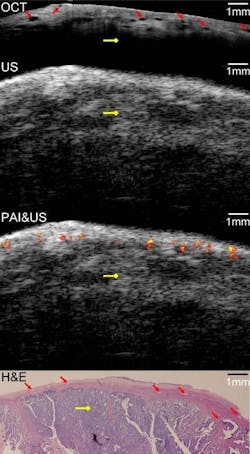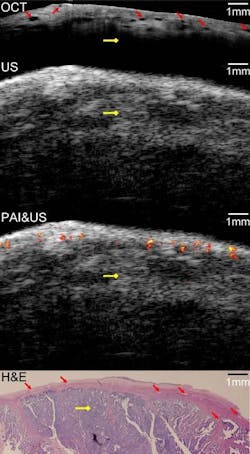OCT, photoacoustics, and ultrasound combo detects ovarian cancer earlier
Combining three previously unrelated imaging toolsâoptical coherence tomography (OCT), photoacoustic imaging, and ultrasoundâinto one new device, a team of researchers from the University of Connecticut (Storrs, CT) and the University of Southern California (Los Angeles, CA) have found a new approach to diagnosing early-stage ovarian cancer in high-risk women through minimally invasive surgery. The new technique may be better than the current standard procedure of preemptively removing the ovaries.
Described by the team in the September issue of Biomedical Optics Express, the diagnostic device combines the contrast provided by photoacoustic imaging, the high-resolution subsurface imaging provided by OCT, and the deeper tissue imaging provided by pulse-echo ultrasound. They tested their device by imaging both pig and human ovarian tissue, and correctly identified malignant tumors that were later confirmed by staining the tissue and examining it under a microscope. These initial tests were performed on tissue that had been surgically removed, but the device's 5 mm diameter is small enough that it could potentially be inserted through a small slit to image tissue in live patients.
-----
Follow us on Twitter, 'like' us on Facebook, and join our group on LinkedIn
Follow OptoIQ on your iPhone; download the free app here.
Subscribe now to BioOptics World magazine; it's free!

